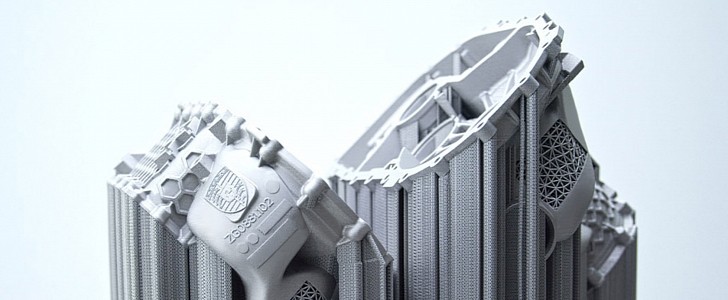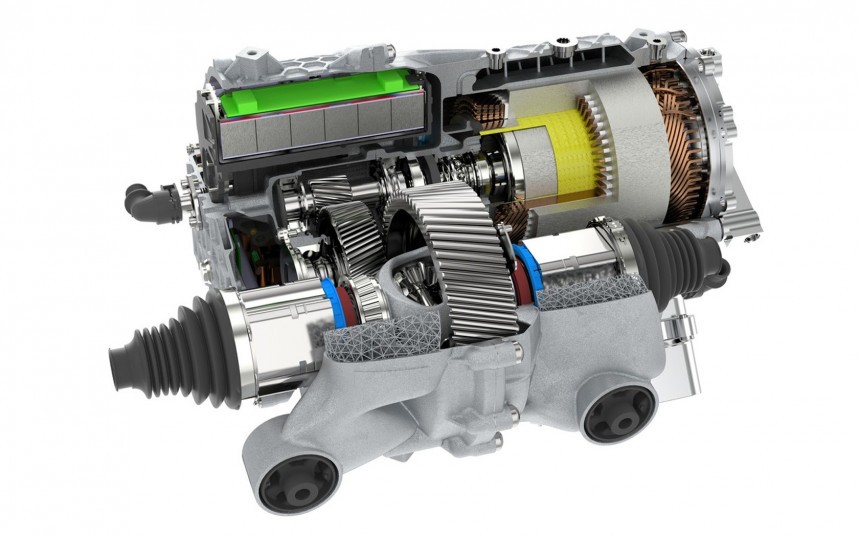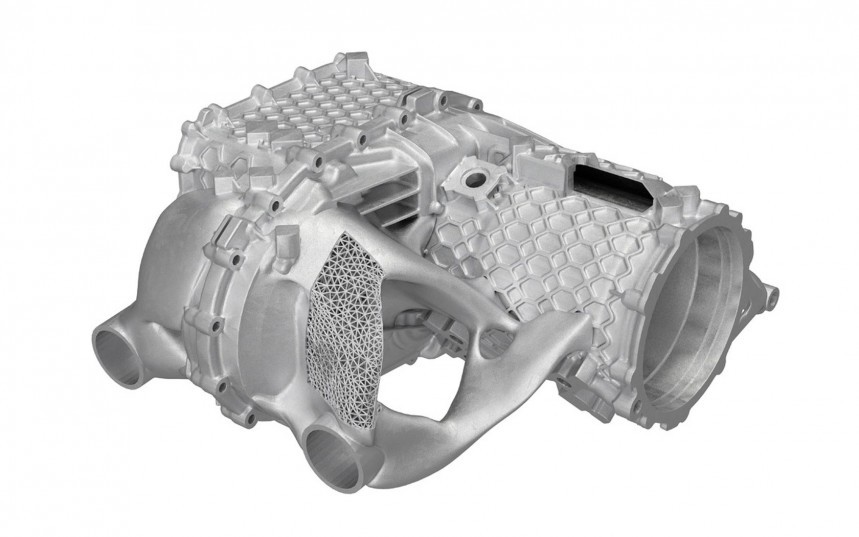After many innovations that led to the rapid evolution of the industry, the German carmaker has now created its first complete electric drive housing using 3D printing, a technique that promises to revolutionize the manufacturing process.
The feat was made possible by engineers at Porsche’s Advanced Development department who were experimenting with building methods that would result in lighter parts than those conventionally cast.
Taking advantage of the structural layout offered by additive laser 3D printing, they increased the stiffness in highly stressed areas, resulting in a housing that is approximately 30% lighter but perfectly capable of passing all the quality and stress tests without any issues.
Another major advantage of using this manufacturing method is that various functions and parts can be integrated, drastically reducing the assembly work and increasing the quality of the components.
In addition to the high-powered electric motor, the housing that the engineers built incorporates the downstream two-speed gearbox.
“Our goal was to develop an electric drive with the potential for additive manufacturing, at the same time integrating as many functions and parts as possible in the drive housing, saving weight and optimizing the structure,” says Falk Heilfort, Project Manager in the Powertrain Advanced Development department at the Porsche Development Centre in Weissach.
This is a perfect example of how 3D printing offers much more possibilities and faster implementation than any other manufacturing process.
Engineers can upload design data to the printer directly from a computer without the need for any other extra steps like intricate tool or mold making. The parts come to life layer by layer from an aluminum alloy powder after just a series of clicks.
Manufacturing complex shapes such as housings with integrated cooling ducts are now possible in almost any geometry since every layer is melted and then fused with the previous one.
For this purpose, various technologies and materials are available. In this case, the electric drive housing was produced from high-purity metal powder using the laser metal fusion process (LMF), where a laser beam heats up and then melts the powder surface.
The resulting component has a continuous wall thickness of only 1.5 mm (0.06 inches), but due to the innovative structures used, rigidity was increased by 100% compared to a traditionally cast part. Oscillations of the housing walls are also exponentially reduced, which leads to improved acoustics.
To optimize the drive, engineers perfectly integrated all the auxiliary components such as bearings, heat exchangers, or oil supply through an arduous development process. The latter included countless hours of computer-generated calculations that required software improvement.
“We were able to expand and improve our software solutions and methods for creating such parts and are now able to virtually implement them in a very short space of time,” says Sebastian Wachter, a specialist in design methodology and topology optimization at the Powertrain Advance Development department.
Using the current 3D printing technology, the first housing prototype took numerous days to complete and was built in two separate processes due to its size. Still, by utilizing the latest advancements in software and technology, the building time will be reduced by 90% and a component such as this will be manufactured in a single process.
The future looks bright for Porsche, as it transitions to the all-electric era, proving that it is not only committed to building some of the most technologically advanced vehicles but also to revolutionizing manufacturing processes.
Taking advantage of the structural layout offered by additive laser 3D printing, they increased the stiffness in highly stressed areas, resulting in a housing that is approximately 30% lighter but perfectly capable of passing all the quality and stress tests without any issues.
Another major advantage of using this manufacturing method is that various functions and parts can be integrated, drastically reducing the assembly work and increasing the quality of the components.
“Our goal was to develop an electric drive with the potential for additive manufacturing, at the same time integrating as many functions and parts as possible in the drive housing, saving weight and optimizing the structure,” says Falk Heilfort, Project Manager in the Powertrain Advanced Development department at the Porsche Development Centre in Weissach.
This is a perfect example of how 3D printing offers much more possibilities and faster implementation than any other manufacturing process.
Engineers can upload design data to the printer directly from a computer without the need for any other extra steps like intricate tool or mold making. The parts come to life layer by layer from an aluminum alloy powder after just a series of clicks.
Manufacturing complex shapes such as housings with integrated cooling ducts are now possible in almost any geometry since every layer is melted and then fused with the previous one.
The resulting component has a continuous wall thickness of only 1.5 mm (0.06 inches), but due to the innovative structures used, rigidity was increased by 100% compared to a traditionally cast part. Oscillations of the housing walls are also exponentially reduced, which leads to improved acoustics.
To optimize the drive, engineers perfectly integrated all the auxiliary components such as bearings, heat exchangers, or oil supply through an arduous development process. The latter included countless hours of computer-generated calculations that required software improvement.
“We were able to expand and improve our software solutions and methods for creating such parts and are now able to virtually implement them in a very short space of time,” says Sebastian Wachter, a specialist in design methodology and topology optimization at the Powertrain Advance Development department.
Using the current 3D printing technology, the first housing prototype took numerous days to complete and was built in two separate processes due to its size. Still, by utilizing the latest advancements in software and technology, the building time will be reduced by 90% and a component such as this will be manufactured in a single process.
The future looks bright for Porsche, as it transitions to the all-electric era, proving that it is not only committed to building some of the most technologically advanced vehicles but also to revolutionizing manufacturing processes.








